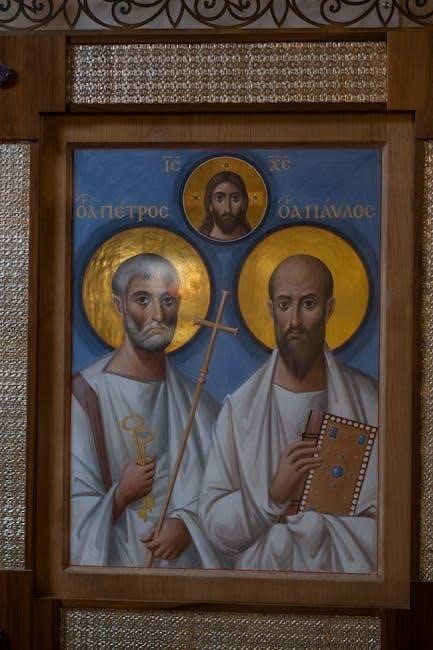Apostle Paul Timeline: Key Events and Chronology
The Apostle Paul’s life, a journey marked by profound transformation and unwavering dedication, presents a compelling narrative. This timeline highlights key events, offering a chronological framework to understand Paul’s ministry, from his early life and conversion to his missionary journeys, imprisonment, and eventual death.
Early Life and Education of Paul
Born in Tarsus of Cilicia around 5 AD, Paul, originally named Saul, was raised in a devout Jewish family. He was a member of the tribe of Benjamin and held Roman citizenship, a privilege likely inherited. His upbringing steeped him in Jewish law and tradition, shaping his early worldview.
Paul received a rigorous education, first in Tarsus, a prominent center of learning, and later in Jerusalem under the esteemed Gamaliel, a leading Pharisee and respected teacher of Jewish law. This education provided him with a deep understanding of the Hebrew Scriptures and rabbinic interpretations. He became well-versed in Greek language and culture, valuable for his later ministry.
His commitment to Pharisaism was evident in his zealous persecution of the early Christian church. Before his conversion, Saul was a staunch defender of Jewish orthodoxy, actively suppressing what he perceived as a heretical sect. This period of intense religious conviction and action set the stage for his dramatic transformation.

Conversion of Paul on the Road to Damascus
The pivotal moment in Paul’s life occurred on the road to Damascus. Around 32-35 AD, Saul, driven by his zeal to persecute Christians, journeyed to Damascus to arrest followers of Jesus. However, a blinding light and a voice from heaven interrupted his mission, forever altering his destiny.
The voice identified itself as Jesus, whom Saul was persecuting. This encounter caused Saul to fall to the ground, overwhelmed by the divine presence. Blinded and shaken, he was led to Damascus, where he fasted and prayed for three days. This experience marked the end of Saul’s old life and the beginning of his new identity as Paul, an apostle of Jesus Christ.
In Damascus, Ananias, a disciple of Jesus, was sent by God to restore Saul’s sight and baptize him. Upon receiving his sight, Paul was filled with the Holy Spirit and began to preach in the synagogues, proclaiming Jesus as the Son of God. This conversion was a radical turning point, transforming a persecutor into a fervent advocate of the faith he once opposed.

Paul’s First Missionary Journey (45-47 AD)
Paul’s first missionary journey, spanning from approximately 45 to 47 AD, marked a significant chapter in his ministry. Accompanied by Barnabas and John Mark, Paul embarked on a mission to spread the Gospel to various regions. Departing from Antioch, they sailed to Cyprus, where they preached in synagogues and encountered opposition, including the sorcerer Bar-Jesus, whom Paul rebuked.
From Cyprus, they traveled to Perga in Pamphylia, where John Mark left them to return to Jerusalem. Undeterred, Paul and Barnabas continued to Antioch in Pisidia, where they preached in the synagogue, sharing the message of salvation through Jesus Christ. Their message resonated with many, but also stirred opposition from some Jewish leaders, leading to their expulsion from the region.
They then journeyed to Iconium, Lystra, and Derbe, where they continued to preach and make disciples. In Lystra, Paul healed a crippled man, leading the people to believe that he and Barnabas were gods. However, Jewish opponents soon arrived and turned the crowds against them, resulting in Paul being stoned and left for dead. Miraculously, he recovered and continued his ministry. After establishing churches in these regions, Paul and Barnabas returned to Antioch, where they reported on their successful mission.
Paul’s Second Missionary Journey (51-54 AD)
Paul’s second missionary journey, commencing around 51 AD and lasting until 54 AD, was a pivotal period of expansion for the early Christian movement. This time, Paul partnered with Silas, embarking from Antioch and traversing through Syria and Cilicia, strengthening the churches in those regions. They then ventured into Galatia, where they were joined by Timothy in Lystra, who became a valuable companion.
Guided by the Holy Spirit, Paul and his companions journeyed westward, passing through Phrygia and Galatia. They attempted to enter Bithynia but were prevented by the Spirit, leading them to Troas. There, Paul had a vision of a Macedonian man pleading for help, prompting them to sail to Philippi, a leading city in Macedonia. In Philippi, they encountered Lydia, a dealer in purple cloth, who, along with her household, was baptized.
They also faced opposition, being arrested and imprisoned after casting out a demon from a slave girl. However, a miraculous earthquake freed them, leading to the conversion of the Philippian jailer and his family. Paul and Silas continued their journey, preaching in Thessalonica and Berea, before eventually arriving in Athens, where Paul delivered his famous address on Mars Hill, proclaiming the unknown God. The journey culminated in Corinth, where Paul spent eighteen months, establishing a thriving church and writing his first and second letters to the Thessalonians.
Paul’s Third Missionary Journey (54-58 AD)
Paul’s third missionary journey, spanning from approximately 54 to 58 AD, was marked by a sustained focus on solidifying the foundations of the churches he had previously established and expanding his ministry in key regions. He once again began his journey in Antioch, traveling through Galatia and Phrygia, strengthening the disciples in those areas. His primary destination and focus for a significant portion of this journey was Ephesus, a major city in Asia Minor.
In Ephesus, Paul spent about three years, teaching daily in the hall of Tyrannus. His ministry was accompanied by remarkable miracles, leading to widespread conversions and the growth of the Ephesian church. However, his success also stirred opposition, particularly from those involved in the worship of Artemis, the city’s patron goddess. A riot erupted, led by a silversmith named Demetrius, who feared that Paul’s preaching was undermining the lucrative trade of making silver shrines of Artemis.
After the unrest subsided, Paul departed from Ephesus and traveled to Macedonia and Greece, encouraging the believers along the way. During this time, he likely wrote his letter to the Galatians and possibly 2 Corinthians. He spent three months in Greece, probably in Corinth, before returning to Macedonia and eventually making his way back to Jerusalem, where he faced increasing hostility and ultimately was arrested.
Paul’s Arrest in Jerusalem and Imprisonment
Upon returning to Jerusalem around 58 AD, Paul’s arrival was met with hostility from certain Jewish factions who opposed his teachings. While visiting the Temple, he was recognized by Jews from Asia who accused him of defiling the sacred place by bringing Gentiles into it. This sparked a riot, and Paul was seized and nearly killed by the mob. Roman soldiers intervened to prevent his death, arresting him and taking him into protective custody.

To understand the charges against him and the extent of the unrest, the Roman commander questioned Paul, who defended himself eloquently, recounting his conversion experience and his mission to preach to the Gentiles. However, his words further inflamed the crowd. The commander, realizing the volatile situation, decided to bring Paul before the Sanhedrin, the Jewish high court, hoping they could resolve the matter.
Before the Sanhedrin, Paul attempted to create division by declaring his belief in the resurrection of the dead, knowing that the Pharisees and Sadducees held differing views on the subject. This tactic caused a further uproar, and the Roman commander, fearing for Paul’s safety, once again removed him from the proceedings. Learning of a plot to assassinate Paul, the commander sent him under heavy guard to Caesarea, where he would be tried before the Roman governor Felix. This marked the beginning of Paul’s extended imprisonment.

Paul’s Imprisonment in Caesarea and Rome
Paul’s arrival in Caesarea marked the beginning of a prolonged period of confinement. He was held under Roman custody, awaiting trial before Governor Felix. During his time in Caesarea, Paul had several opportunities to defend his faith before Felix, his wife Drusilla, and later, his successor Festus. He maintained his innocence of any crime against Roman law, asserting that his teachings were consistent with Jewish scripture and tradition.
Despite Paul’s compelling defense, Felix, hoping for a bribe, postponed the verdict and kept Paul in prison for two years. When Festus succeeded Felix, Paul’s case was reopened. Festus, seeking to appease the Jewish leaders, suggested sending Paul back to Jerusalem for trial. However, Paul, aware of the potential for injustice and danger in Jerusalem, exercised his right as a Roman citizen to appeal to Caesar.
This appeal set in motion Paul’s journey to Rome. After a perilous voyage, including a shipwreck off the coast of Malta, Paul finally arrived in Rome around 60 AD. There, he was allowed to live under house arrest, still under Roman guard, but with the freedom to receive visitors and continue preaching the gospel. During his Roman imprisonment, Paul wrote several of his most influential letters, including Ephesians, Philippians, Colossians, and Philemon, enriching the Christian faith with his profound insights and theological reflections.
Paul’s Writings and Their Chronological Order
The Apostle Paul, a prolific writer, significantly shaped early Christian theology through his letters. Determining the precise chronological order of Paul’s writings remains a topic of scholarly debate, but a generally accepted sequence can be established based on internal evidence, historical context, and theological development.
Paul’s earliest letters, likely written during his second missionary journey, include 1 Thessalonians and 2 Thessalonians. These letters address issues of eschatology, encouraging believers to stand firm in their faith amidst persecution and uncertainty about Christ’s return. During his third missionary journey, Paul penned 1 Corinthians, 2 Corinthians, Galatians, and Romans. These letters tackle various challenges within the Corinthian church, defend Paul’s apostleship against detractors in Galatia, and provide a systematic presentation of justification by faith in Romans.
The “Prison Epistles”—Ephesians, Philippians, Colossians, and Philemon—were written during Paul’s imprisonment in Rome. These letters explore themes of unity in Christ, humility, reconciliation, and the cosmic significance of the church. Finally, the Pastoral Epistles—1 Timothy, 2 Timothy, and Titus—were likely written after Paul’s release from his first Roman imprisonment. These letters offer guidance to Timothy and Titus on matters of church leadership, sound doctrine, and pastoral care. While the exact dating and authorship of the Pastoral Epistles are debated, their inclusion in the Pauline corpus underscores Paul’s enduring influence on Christian thought and practice.
The Death of Paul: Approximate Date and Location
The Apostle Paul’s life, dedicated to spreading the Gospel throughout the Roman world, ultimately met a martyr’s end. While the exact date and circumstances surrounding his death remain shrouded in some uncertainty, historical tradition and early Christian sources provide a reasonably consistent picture.
Most scholars place Paul’s death around AD 64-68, during the reign of Emperor Nero in Rome. This dating aligns with the accounts of Paul’s imprisonment in Rome, as described in the Book of Acts and alluded to in his letters. According to tradition, Paul was beheaded in Rome, a method of execution reserved for Roman citizens. This detail is consistent with Paul’s claim to Roman citizenship, which afforded him certain legal protections.
The precise location of Paul’s execution is not definitively known, but it is believed to have occurred outside the city walls of Rome, possibly at a place called Tre Fontane. A church now stands at this location, commemorating Paul’s martyrdom. While the historical evidence for Paul’s death relies on tradition and inference, the consistent testimony of early Christian writers and the absence of any conflicting accounts lend credence to the generally accepted narrative. Paul’s death, therefore, remains a powerful symbol of his unwavering commitment to Christ and the Gospel.
